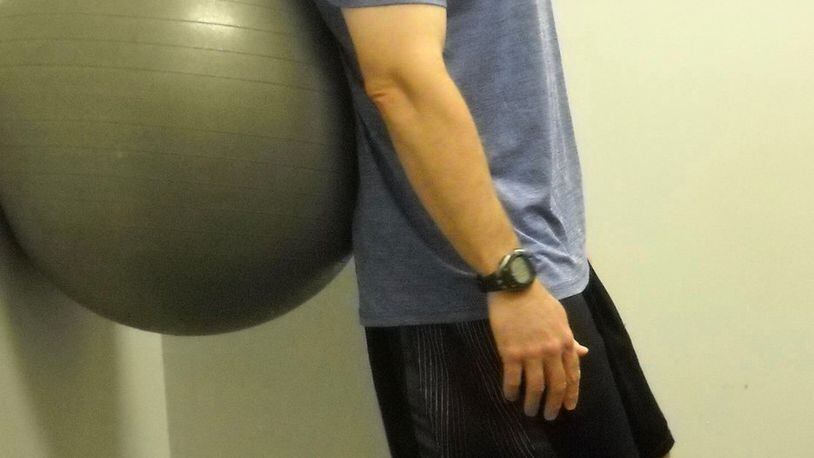Instructions:
To execute this exercise, place a stability ball behind the lower back. Carefully step the feet forward and position them approximately shoulder or hip width apart. Looking straight ahead, bend the knees and slowly lower into the squat position, keeping the torso upright. Ideally, the knees will be directly above the ankle at the bottom of the repetition. Do not descend any further than thighs parallel to the floor, and be careful not to round the back. Instead, the spinal column should be kept in its normal alignment all the way to the bottom of the squat and as you return to standing.
Tips:
Safety should always be your first priority when exercising. Check with your doctor before adding squats to your workout routine, especially if you are unaccustomed to physical activity, have pre-existing injuries or a medical condition. Using poor form can create problems for the knees or hips, or exacerbate current issues.
Your heels should be in contact with the floor throughout the repetition, and your knees should not travel over the toes. The upper body should remain upright throughout each repetition.
Other options:
If you do not have a stability ball, you can simply put your back against a wall to perform the exercise.
Using added resistance. Get the advice of a professional if you plan to perform squats using added resistance such as dumbbells. Holding onto extra weight increases stress on the joints, so is not appropriate for everyone. Intensity can be increased by holding the squat when thighs parallel to the floor for the desired number of seconds before standing, or by performing reps at a slower pace.
If your leg strength is not sufficient to bring the thighs parallel to the floor, modify range of motion until you get stronger. For example, lower the body only halfway down before pushing back up again.
Beginners should start with one set to get a feel for the exercise, every other day or every third day. Stretching before and after the set can be beneficial. Aim for 8 -10 repetitions. As progress continues, you can add reps or sets. A 2-3 second lowering and a 2-3 second standing is a reasonable pace. Moving too quickly in any exercise diminishes the time muscles are under tension, taking away from strength benefit.
About the Author
